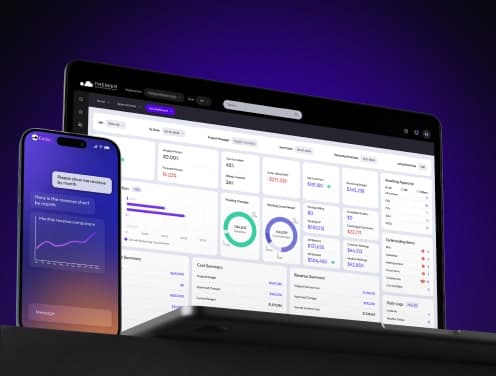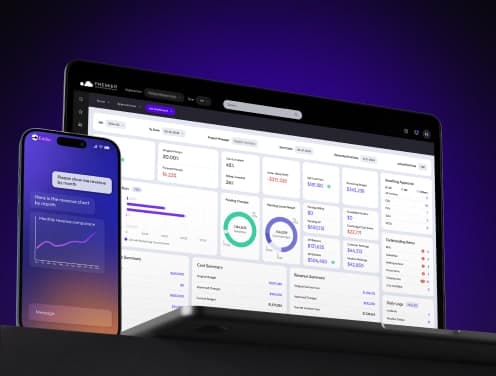
The Importance of Communication in Construction and Ways to Improve It
48% of construction projects fail due to poor communication. These failures result in delays that get pricey, create safety problems, and exceed budgets. Clear communication serves as the foundation of successful construction projects.
Construction communication matters way beyond regular daily interactions. Clear communication shapes construction operations at every level. Teams need to coordinate with each other. Complex schedules require management. Safety protocols must stay in place. Quality standards have to be maintained.
This piece looks at how construction communication has changed over time. You'll find everything about what makes it work, the digital tools that are changing things, common obstacles, ways to measure success, and how to create a communication-first culture. The guide offers practical ways to boost your construction communication and get better project results.
The Evolution of Construction Communication

Construction companies have changed their communication methods dramatically over the years. Recent studies show that only 37% of projects finish on time with traditional communication methods. Projects with strong communication systems achieve an 80% success rate when meeting their objectives.
Traditional vs Modern Communication Methods
Construction communication used to depend on:
- Face-to-face meetings and physical blueprints
- Walkie-talkies to coordinate on-site
- Paper-based documentation and record-keeping
- Manual progress tracking and reports
These old methods worked but created big challenges. Studies show that 36% of employees have felt unsafe due to poor communications at work. Digital solutions have revolutionized this space. Construction firms now use these tools to boost project coordination and safety management.
Impact of Digital Transformation
Digital tools have changed how construction teams cooperate and communicate. Industry research shows companies that embrace digital transformation can expect a 14-15% increase in productivity and cost reductions of 4-6%. Teams can now update information instantly, store data centrally, and make better decisions faster.
Cloud-based platforms have revolutionized project communication. Teams can now access and share vital information right away. These changes help construction sites stay productive even with staggered work patterns and reduced on-site personnel.
Emerging Communication Technologies
Several innovative technologies shape construction communication's future. Internet of Things (IoT) devices bring different communication methods together into one system. These advanced solutions enable:
- AI/ML Systems: Predictive analysis and automated reporting
- Virtual Reality: Enhanced visualization and remote collaboration
- Digital Twins: Real-time performance tracking and simulation
- Blockchain: Secure and transparent information sharing
New technologies help solve old communication problems and create simplified processes. Construction firms see major improvements. They have fewer delays, reduced communication errors, and smoother workflow when they use these modern management tools.
Critical Components of Construction Communication
Construction projects succeed when three basic communication components work together smoothly to deliver results.
Verbal and Non-verbal Communication
Construction teams use many forms of communication. Studies reveal that poor communication leads to serious safety risks, as 21,500 construction workers are injured or killed on the job annually. Teams need to become skilled at both verbal and non-verbal cues to keep everyone safe and productive.
Communication plays a vital role at construction sites through these elements:
- Clear verbal instructions during safety briefings
- Hand signals for crane operations and equipment coordination
- Body language interpretation during site inspections
- Team briefings and toolbox talks
- Cultural and language consideration in diverse teams
Documentation and Record Keeping
Documentation forms the foundation of construction communication. Research shows that poor documentation is the primary source of construction disputes. A systematic approach helps capture and maintain critical project information properly.
Documentation Types and Their Purpose/Impact:
- Daily Logs
- Purpose: Track progress and issues
- Impact: Prevents disputes
- Safety Reports
- Purpose: Monitor compliance
- Impact: Reduces accidents
- Change Orders
- Purpose: Record modifications
- Impact: Controls costs
- Meeting Minutes
- Purpose: Document decisions
- Impact: Ensures accountability
Construction professionals should create all documentation at or shortly after events occur. Records prepared more than a week later lose their value as job evidence.
Visual Communication Tools
Today's construction sites rely heavily on visual communication tools to improve project coordination. Real-time collaboration improves teamwork in brainstorming sessions, whatever the team members' locations. Premier Construction Software leads the way in using visual communication tools to streamline projects and boost team collaboration.
Visual tools have transformed construction communication through:
- Building Information Modeling (BIM) for project visualization
- 360-degree camera mapping for site monitoring
- Digital whiteboards for immediate collaboration
- Augmented Reality (AR) for on-site information overlay
Construction firms report that good visual communication reduces the risk of miscommunication, delays, and costly mistakes. Teams that use visual collaboration tools work better together and solve problems faster, especially in complex projects where traditional methods might not work well.
Digital Tools Revolutionizing Construction Communication
Digital tools have changed how construction teams communicate. Modern technology enables teams to collaborate and work efficiently like never before. Studies show that construction firms using digital solutions see productivity increases of up to 50%.
Project Management Software Solutions
Project management software serves as the life-blood of modern construction communication. Popular platforms like Premier help teams manage projects better. Data shows that 90% of surveyed customers report improved field-to-office communication. Premier Construction Software makes use of these advanced tools to optimize project delivery and boost team collaboration.
Software Capabilities and Their Impact:
- Document Management
- Impact: Centralized information access
- Real-time Updates
- Impact: Instant team notifications
- Automated Workflows
- Impact: Streamlined approvals
- Integration Features
- Impact: Connected systems and data
Mobile Apps and Real-time Updates
Mobile apps have changed on-site communication. Teams can now update and make decisions instantly. Key benefits include:
- Real-time progress tracking and reporting
- Immediate issue documentation and resolution
- Digital site diaries and photo documentation
- Automated weather capture and safety alerts
Studies show teams that use mobile construction apps process and distribute RFIs and submittals 8 days faster on average. This improvement substantially reduces project delays.
BIM and Virtual Collaboration
Building Information Modeling (BIM) and virtual collaboration tools represent a transformation in construction communication. BIM integration with Virtual Reality (VR) shows remarkable results. Projects using these technologies report improved communication, understanding, and collaboration.
Virtual collaboration platforms help teams to:
- Identify design errors before production
- Improve constructability reviews
- Enhance sequencing and planning
- Aid remote team coordination
Cloud-based platforms create a seamless environment where teams access project information from anywhere. Research indicates that cloud software makes pull planning highly available. Owners monitor project progress up-to-the-minute and maintain transparency throughout construction.
Premier Construction Software leads the integration of these digital tools. Their approach shows how modern communication technology improves project delivery and team collaboration. Their detailed digital solutions result in faster decision-making and reduced communication errors.
Overcoming Communication Barriers in Construction

Communication challenges in construction projects can substantially affect their success. Industry research shows that 67% of employers face miscommunications because of language differences. This highlights the need for better barrier management strategies.
Language and Cultural Differences
The construction industry has a major language skills gap. About 40% of workers report they have trouble communicating. Premier Construction Software helps solve this through detailed language support programs that include:
- Bilingual Documentation
- Implementation Method: Translated safety protocols
- Visual Communication
- Implementation Method: Universal symbols and diagrams
- Cultural Sensitivity Training
- Implementation Method: Regular team workshops
- Language Resources
- Implementation Method: On-site translators and apps
Technical vs Non-technical Communication
Project success depends on bridging the gap between technical and non-technical stakeholders. Studies reveal that construction projects often fall behind schedule when technical and non-technical team members misunderstand each other. These solutions help:
- Simplified technical documentation
- Visual aids and demonstrations
- Regular stakeholder meetings
- Clear communication protocols
Premier Construction Software has created innovative approaches to bridge this gap. Their methods make technical information available to all project stakeholders without losing accuracy and precision.
Remote Team Coordination
Remote work has brought new challenges to construction communication. Research shows projects with good remote coordination systems perform 36% better. These strategies help manage remote teams successfully:
- Establishing clear communication channels
- Implementing daily check-ins
- Utilizing cloud-based collaboration tools
- Creating standardized reporting systems
Remote coordination needs reliable digital infrastructure. Teams that use dedicated communication platforms finish projects 25% faster. Premier Construction Software uses detailed remote management solutions. These keep projects moving forward and ensure clear communication among all stakeholders.
Communication in construction projects means more than just exchanging information. Construction firms can improve project outcomes and team collaboration by addressing these barriers systematically. Premier Construction Software shows how good communication strategies can revolutionize project delivery and improve team coordination at every level of construction operations.
Measuring Communication Effectiveness
Construction projects need a systematic approach to measure how well teams communicate. This combines numbers-based metrics with qualitative feedback. Studies show that organizations with structured communication measurement systems face 36% fewer project delays.
Key Performance Indicators
Construction firms need to track specific KPIs to see how well their teams communicate. Companies that focus on these metrics achieve 80% better project outcomes. Premier Construction Software uses detailed KPI tracking systems to measure the following Communications Metrics with their respective Impact Assessments:
- Response Time - Project timeline adherence
- Information Accuracy - Error reduction rates
- Stakeholder Engagement - Participation levels
- Documentation Quality - Compliance rates
Communication Audit Methods
A well-laid-out communication audit helps organizations spot their strengths and weaknesses. Studies show that companies doing regular communication audits see 45% fewer miscommunications. The audit process has:
- Clear audit scope and stakeholder group definition
- Communication sample collection and analysis
- Audience feedback through surveys
- SWOT analysis
- Development of applicable recommendations
Premier Construction Software uses these audit methods to keep project communication excellent. This leads to better stakeholder satisfaction and streamlined processes.
Feedback Loop Implementation
Good feedback loops are vital to keep improving construction communication. Research shows organizations with structured feedback systems are 12 times more likely to keep their employees and see 3.6 times more effective breakthroughs.
The feedback loop process covers:
- Regular team check-ins
- Standard feedback collection methods
- Quick improvement implementation
- Impact tracking
- Better communication strategies
Premier Construction Software leads the way in feedback systems for construction communication. Their data shows that companies with resilient feedback systems achieve 8.4 times higher employee engagement. Their approach has:
- Digital platforms for live input
- Anonymous suggestion systems
- Regular stakeholder surveys
- Implementation tracking metrics
- Performance measurement tools
The numbers prove that communication measurement systems work. Construction firms using detailed measurement strategies see 74% higher engagement rates and substantially better project outcomes. These metrics help teams find communication gaps, make targeted improvements, and deliver high-quality projects consistently.
Building a Communication-First Culture
A systematic approach revolutionizes how organizations operate when building effective communication culture in construction. Construction firms with strong communication cultures see 14-15% improved productivity.
Leadership's Role in Communication
Leadership commitment forms the foundations of communication culture. Relationship management, vision, trust, and goal orientation stand out as the main leadership traits that optimize successful construction communication. Premier Construction Software leaders show these qualities through:
- Transparent Decision-Making - Builds team credibility and confidence
- Regular Team Engagement - Promotes collaborative environment
- Clear Vision Communication - Arranges team efforts with goals
- Active Feedback Systems - Promotes continuous improvement
Construction managers who keep communications transparent build stronger credibility and create greater confidence among team members.
Team Training and Development
Ongoing training and skill development make communication effective. Organizations that implement structured communication training see 67% fewer miscommunications from language barriers. Key training elements include:
- Written and verbal communication techniques
- Active listening and feedback practices
- Cross-cultural communication skills
- Technical documentation standards
- Digital tool proficiency
Premier Construction Software leads the way with complete training programs that achieve 36% better performance in remote coordination. Their method focuses on continuous learning and adapting to new communication technologies.
Creating Communication Standards
Clear communication standards maintain consistency across projects. Construction firms using standardized communication processes finish projects 25% faster. Effective standardization has:
Communication Chain Definition:
- Clear roles and responsibilities
- Set reporting hierarchies
- Written communication protocols
- Regular standard reviews and updates
Organizations using these standards achieve 80% better project outcomes. Premier Construction Software proves this through their well-laid-out approach to communication standardization, which brought significant improvements in project delivery and team collaboration.
Teams with set communication standards are 12 times more likely to retain employees. This retention rate associates with better project outcomes and team efficiency.
Construction firms that adopt complete communication cultures report 74% higher participation rates. These benefits show up as:
- Fewer project delays
- Better safety compliance
- Higher stakeholder satisfaction
- Improved risk management
- More breakthrough potential
Organizations that make communication culture a priority see 3.6 times more effective breakthroughs. Better collaboration and information sharing across the organization drive these improvements. Premier’s construction management software shows this through their integration of communication standards with modern technology platforms, achieving 8.4 times higher employee participation.
A communication-first culture needs steady effort and dedication from everyone in the organization. Construction projects with strong communication cultures are 80% more likely to meet their objectives, showing why investing in communication infrastructure and training matters so much.
Conclusion
Communication is the life-blood of successful construction projects. Data shows that strong communication practices lead to 80% higher project success rates. Digital tools, standard processes, and cultural changes have reshaped how construction teams share information and work together.
Premier Construction Software shows how the right communication strategies create remarkable results. Their projects finish faster and their teams cooperate better. Companies that embrace complete communication systems see improvements in all their project metrics.
Construction firms need ongoing commitment, measurement, and improvement to make communication work. Long-term success in this complex industry depends on clear communication channels, team training, and strong feedback systems.
The construction industry's future needs both traditional methods and innovative digital solutions. Companies that balance these elements while building strong communication cultures will lead the industry. Their projects will run more efficiently and safely than their competitors.





















